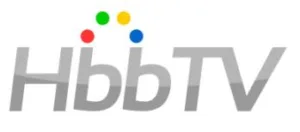The HbbTV Association finalised and released the HbbTV 2.0 specification last month (UltraHD and Continuity Arrive With HbbTV 2.0). The new document outlined various additions to HbbTV, such as support for the HEVC codec and the use of second screens. We had a chance recently to talk to Kirk Edwardson, director of product marketing at Espial and co-chair of marketing at the HbbTV Association, about the news.
We’ve been hearing about HbbTV 2.0 since early last year. What prompted the Consortium to make the move at this point?

That’s a great question. The HbbTV Association began working on the next version of the specification as soon as HbbTV 1.5 was released. As you may know, we go through a structured and collaborative process to carefully align the market and technical requirements that are brought forward by our members. Our recent announcement on the availability of the HbbTV 2.0 specification really represents the outcome of this process – one that has carefully defined the specification to meet the needs of broadcasters, technology suppliers and display terminal manufacturers. One of the key additions in HbbTV 2.0 is support for HTML5 – there was strong demand from all of our members to implement this for HbbTV 2.0. It’s a pretty exciting moment for us and we’re now eagerly awaiting the first HbbTV 2.0 apps which will become available next year. HbbTV 2.0 will open up a new set of use cases including companion device applications, on-demand and push services and a range of other new services.
UltraHD is one of the biggest topics in display technology today, and v2.0 of the platform appears to be geared to support it, through HEVC. Will this be part of the standard feature-set on all HbbTV 2.0 terminals, or is it an optional feature?
UltraHD and HEVC are indeed some of the most exciting developments in the industry right now. The HbbTV 2.0 specification was designed to support both features, and it will really be the manufacturers’ decision on which terminals they will support these features. In fact, if a TV supports HEVC for broadcast then the HbbTV spec requires it to be supported for broadband. As you know, HEVC also offers benefits for consumers with HD video, giving better video quality for the same bitrate, or the same video quality with lower bitrate. UltraHD is something different, and terminals can support HEVC without UltraHD. It is early days for both of these technologies, so we would certainly expect to see growing support for them on manufacturers’ roadmaps.
How will terrestrial reception of UltraHD programming be handled?
What we’re seeing is that terrestrial reception of UltraHD will be driven by the broadcasters and terminal manufacturers themselves. The broadcasters will need to update their transmission technologies to support UltraHD and the terminal manufacturers will need to support the latest silicon and software. Right now, the strongest market interest we’re seeing is around HEVC. With the continuing pressure to release terrestrial spectrum for mobile use, there is more motivation to move to HEVC so broadcasters can preserve terrestrial services with less spectrum. The job of HbbTV is to provide a platform for rich applications to allow consumers to enjoy video content, value added content, on-demand content and other use cases.
The DIAL protocol, in use with HbbTV 2.0, enables companion screens to launch apps on a TV. Are there plans to go further with this, such as multiscreen services?
You may want to consider joining the HbbTV Association so you can join our technical specification working group! This is the group that reviews new use-cases for consideration in upcoming versions of the specifications.
OK, to really answer your question – this kind of use-case is already possible with HbbTV 2.0, without needing to ‘go further’. If a broadcaster would like to implement this use-case, they can design their app on a broadcast TV channel to launch an app on a user’s mobile device. The broadcast app can then tell the mobile app what channel and/or program is being watched and the mobile app could get the channel/program via OTT if it’s available.

